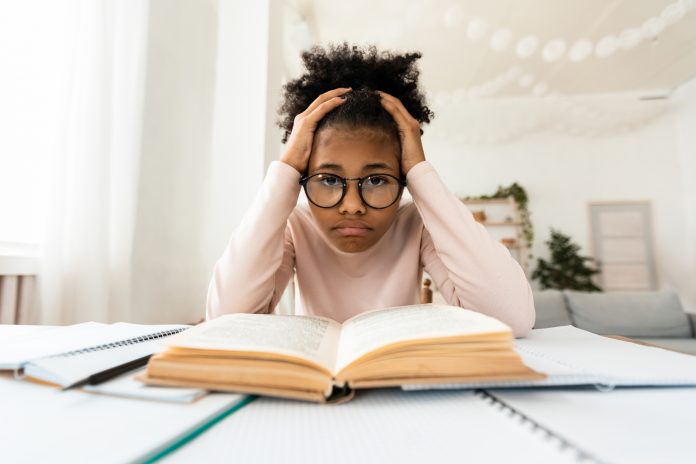Dr Ronda Zelezny-Green, Global Head of Training and eLearning at the Internet Society, looks at the global digital divide and the impact the COVID-19 pandemic is having on remote learning
Sitting in the driveway of a fast-food restaurant just to catch their free Wi-Fi signal. Sharing a cell phone between three siblings to access online courses and the screen is too small to do homework on. Waiting for mobile WIFI mounted on school buses that will not be available until at least five days after online school starts. Making tough choices between food, electricity, or staying connected. These experiences are happening every single day… in the United States.
For years, research from the majority of the world has raised the alarm that techno-optimism largely originating from North America and Europe was having unintended consequences for international youth development, especially in the education sector. There were laptops for every child – that didn’t work. School computer labs with state-of-the-art equipment – with no connectivity or electricity to operate. Broadband that was becoming more widespread – yet was and remains extremely unaffordable for the people who need it most. Now, the chickens have come home to roost.
In North America and Europe, just as in countries in Latin America, Africa, Asia, and the Middle East, the COVID-19 pandemic has exposed in stark terms just how broad the global digital divide is – and that this divide is NOT just limited to so-called developing countries. Over here in the United Kingdom, youth in London, an economic powerhouse, cannot participate in virtual learning because they do not have a device nor connectivity to do so. In fact, the UK’s fast return to physical schooling in late spring this year was due in part because large numbers of children in several London boroughs were unable to benefit from any formal education whatsoever during the lockdown. In the United States, the Learning Policy Institute found that Native American and Native Alaskan, Black, and Hispanic students were more likely not to have access to a high-speed internet connection in their homes.
We need to challenge the assumption that connectivity for remote learning is just a majority world problem. For too long, making “their” problems something far removed from “our” problems has resulted in deep ignorance to the lack of meaningful connectivity right in our own backyards. In fact, UNICEF has estimated that 463 million children worldwide, or one of every three school-aged learners, do not have the tools they need to participate fully in virtual schooling.
Innovation is not enough and adapting just enough to get by only masks the problem, leaving it for the next election cycle and harming the potential of future generations of our children. Black and Brown girls are particularly damaged by this inaction since, as the Center for Global Development notes, previous pandemics have shown that learning loss due to the global digital divide and lack of access to digital learning tools is compounded by the increased likelihood that girls will more often than boys be tasked with more chores and care work within the home, asked to help bring income into the household, and are more affected by the loss in access to reproductive health services and safe spaces like girls’ after school clubs. Moreover, Black and Brown girls are more vulnerable to gender-based violence and potential early marriage and/or sexual exploitation.
So, what can you do?
Well, for one, this problem needs to be reframed as a truly global issue. It is all of our problem to solve and not a challenge just for people with whom we have physical distance. We also need to acknowledge that this pandemic has collided with another pandemic: the deep, persistent, and pernicious racism that even the international youth development community of implementers, researchers, policymakers is not immune to and in fact for decades has been complicit in upholding. You cannot consider the effects that the COVID19 pandemic is having on remote learning without acknowledging that racist healthcare systems and the racist institutions and structures that perpetuate a lack of healthcare access has meant that the families with children who are hit hardest by the pandemic are Black and Brown. This means that youth who look like me are not only more likely to catch COVID-19 but also to die from it and yet we are still expected to fully participate in remote learning with no meaningful internet access.
I will not pretend to have all of the answers, however, I do have two specific recommendations. The Alliance for Affordable Internet, or A4AI, has identified that the internet is not just a public good but a lifeline. And in this day and age, I believe it is a human right and everyone who wants to access it should be able to. I advocate for their recommendation that governments commit to providing all necessary support to keep citizens connected. You cannot leave this just to the private sector and competition since in decades, they have failed to rise to this challenge of getting everyone connected. This support includes using any national ICT or connectivity funds to help make universal access a reality and not just a policy on paper.
My second recommendation is to understand and embrace that Black and Indigenous Lives Matter. As noted international development scholar and practitioner Robert Chambers urges: put the last first. If we are not online and learning then it means that you have not done your jobs. Do you want us to have true economic opportunities? Do you want us to have consistent and meaningful access to education, virtual or otherwise? Then say that we matter. Acknowledge it. Believe it. And then, take action that shows you mean it.











